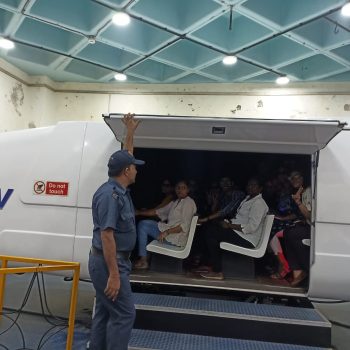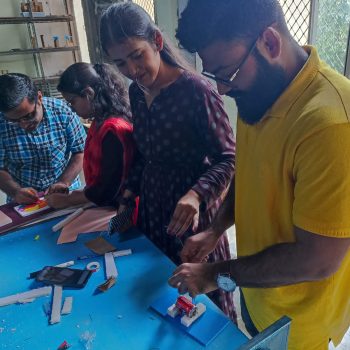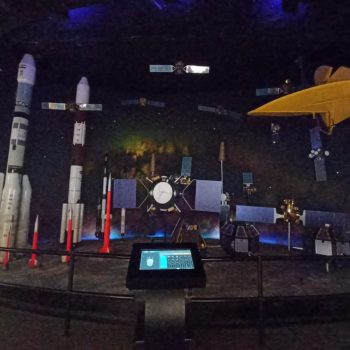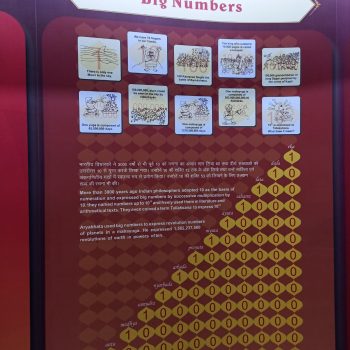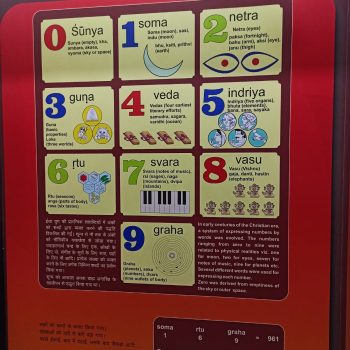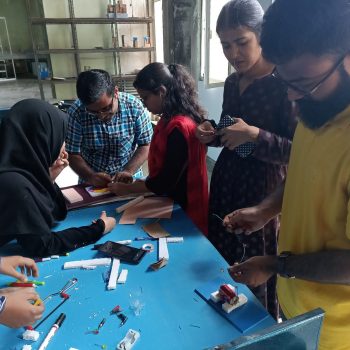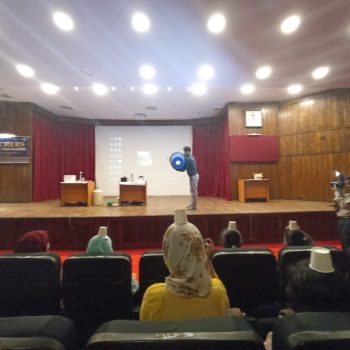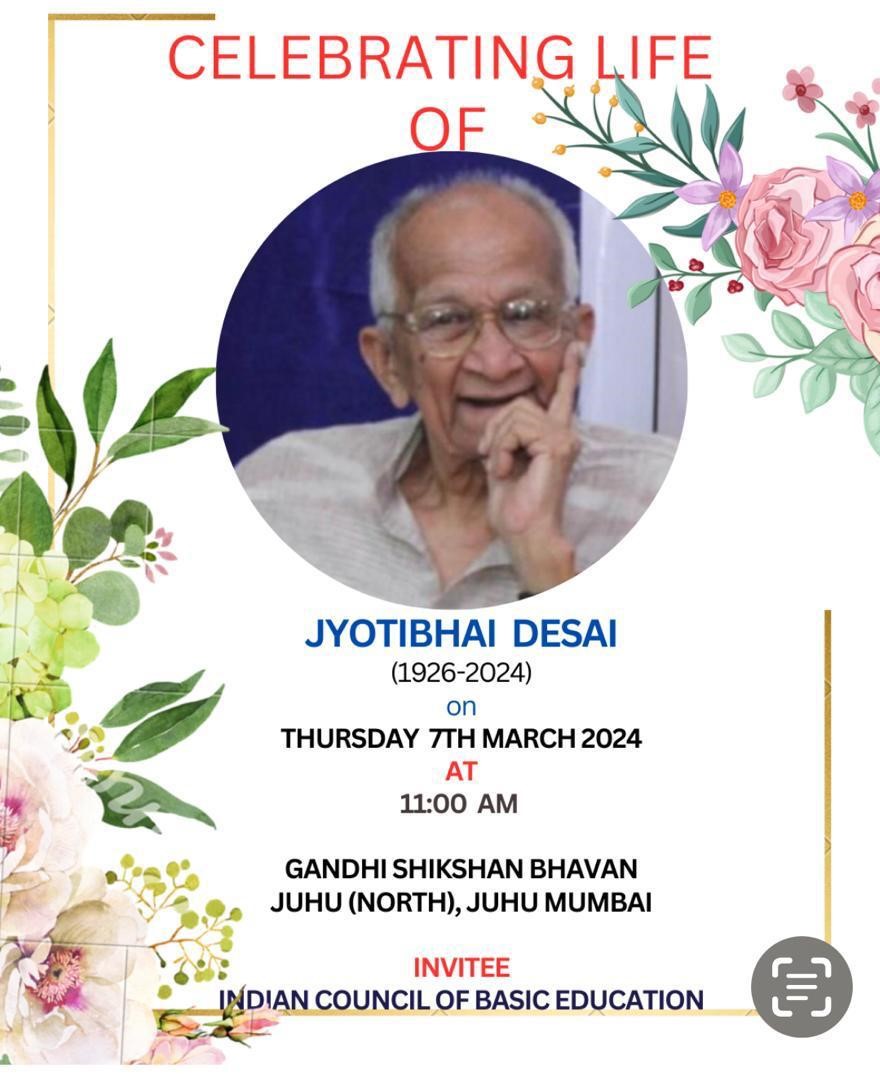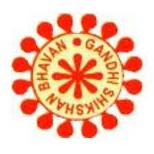
Nehru Science Center Teacher’s Training Program | 04 Dec 2023
Nehru Science Centre: Report
Good morning to one and all present over here. I deem it a great honour and privilege to deliver today’s report on TTP i.e Teacher’s Training Program. This TPP was organized for all science and maths students. It was a five days Training i.e from 12th September onwards to 16th September, which was held in Nehru Science Centre for all the students of science and maths stream. So before commencing with the events and sessions that were arranged. I would like to apprise a short history/information about NSC (Nehru Science Centre), it’s establishment as well as it’s location. National Council of Science Museums (NCSM), the parent body of NSC, Mumbai, is an autonomous society under the Ministry of Culture; Government of India. NSC is the largest interactive science centre in India. It is located in Worli, Mumbai. The centre is named after India’s first Prime Minister, Jawaharlal Nehru. In 1977, the centre started with the ‘Light and sight’ exhibition, and then in 1979 a science park was built. On 11 November, 1985 the full-fledged science centre came into existence and was finally opened to public by PM Rajiv Gandhi. It has the best infrastructure and skilled manpower to conceptualize, design, develop and organize high quality science exhibits and other related educational programs and activities.
Nehru Science museums and centre provides lifelong engagement by providing access to to real things – objects, phenomena and people; through creating shared, engaging and memorable learning experiences for families and adults. They also provide experiences that benefit teachers and complement school science lessons.11-Jun-2013.
Nehru Science centre stimulates curiosity, develop inquiring minds and expose children and adults to positive new experiences. They help people to cope with the rapidly changing technological environment, and empower them by improving their life skills.
As we are all are aspiring teachers Nehru science centre is indeed a blessing for each one of us it has got everything related to history, geography, science, maths, language, art and craft as well. Science centre consist of surpassing teaching aids that can be beneficial and useful for us,
with the help of such advanced tools and facilities we teachers can make our teaching effective, interesting, distinctive and comprehensive.
12th September, Monday was the first day at Nehru Science Centre. All of us reached sharp at 10:30 at the location. 11:00-11:15 was the time assigned for the registration process. The day was inaugurated with the blessings and guidance of Mr. Kumar Sir, The Director of Nehru Science Centre. We were all pleased by his words and we’re ready to participate actively in each and every event as well as activities. First and foremost, all of us were introduced with various tools, types of tools, their evolution and timeline of tool development along with this we were explained about industrial revolution and their occurrence with the help of a PPT. This above session was conducted by the curator, Jain Sir. There after at 2’o clock we were all asked to assemble in activity room where Dharmik Sir gave us a short introduction on teaching aids and how they can be advantageous for us along with this small explanatory session. Sir with the help of some materials taught us different kinds of teaching aids that includes ‘Area of circle, Circle and it’s diameter and Pythagoras theorem ‘. The teaching aids taught to us were uncomplicated yet advantageous and productive.
13th September, Tuesday was our second day of teacher’s training. Each one of us reported at 11:00 am. There was a small gallery visit arranged for us. i.e. Science for children. All of us visited the gallery we’re all accompanied by Shashwat Sir who was the instructor and guide as well for us and he did explain each and every exhibits really well. The gallery consisted of
plethora of energy models, it had lazy sew saw, harmograph, planetary motion, grand shuttle and rising arc. We had a fun time exploring the gallery and learning something interesting and innovative at each and every step. Followed by this visit, we were shown a 3D show. This show depicted the life of all aquatic animals and how they came into existence. Along with this we’re shown a science Odyssey show related to space and life of humans in space, their struggles,success and achievements. There after at 2 pm again we had a fun activity session i.e making of teaching aids. The session was directed by Dharmik Sir. He taught us the process of making Electric DC motor and brain model. All of us were highly enthusiastic and took keen interest in the preparation of these models and the session ended well.
On Wednesday 14 September 2022 we reached NSC at 11 o’ clock to visit the gallery show
on sound and hearing. It showed doppler effects, delayed sound and all parts of the ear and their function and different sounds created by different animals, sound effects passing from material and air
After that from 12 o’ clock we started to visit the machinery world with Nisha ma’am. She told us all compact arrangements of circuits from the previous computer till the latest computer, artificial intelligence sensor, screen bioinformatics recording, remote sensing topological map etc.
From 12:30 onwards we headed to the activity room where Iqbal sir had demonstrated REEDORECTEN which is a shortcut of 10 major reactions from that he had demonstrated some amazing reactions we were unaware.
One of the reaction was water + Na2co3+ naphthalene balls + (CH3COOH) vinegar water→co2 release . The naphthalene ball was surrounded by bubbles of CO2 and some movement was seen in naphthalene balls. This reaction showed that the volume increase and density decreases.
From 2 to 4:00 Foldscope
Rajesh sir had given clear instructions about foldscope. This was really amazing as a biology student I loved this activity. Foldscope combines low-cost materials with precision optics to create inexpensive microscopes that are affordable for communities worldwide. With a magnification of 140X, Foldscope can visualize tiny things like bacteria and microorganisms as well as larger samples like insects, plants, fabrics, and tissues. Foldscope can also attach to mobile phones for imaging. This portable microscope is also waterproof. With that versatility, the possibilities are endless!
It was developed by Manu Prakash and designed to cost less than one USD to build. It is a part of the “frugal science” movement which aims to make cheap and easy tools available for scientific use in the developing world.
15th September 2022
From 11am to 12:10pm.
After reaching Nehru science center we entered into a simulator ride machine to provide a realistic imitation of the control and operation of a vehicle. It had a screening ride film called the Great Wall of China. Here we were guided by a crazy old man with a rocket powered chariot. It was a bumpy ride. The time duration was approximately 10minute.
After this we headed to aviation and space enthusiasts, the newly launched Hall of Aviation and Space at Nehru Science Centre is really amazing. Sir explained about the principles of flight and model design. The hall takes its visitors on tour using interactive exhibits, stories, models, artefacts, participatory visualization tools, scale down 3D models of aircraft, helicopter, spacecraft, rockets, and much more.
It also covers early contributions of early pioneers fundamental of flight, air traffic control, history of civil aviation in India, hot air balloons etc.
There is a dedicated corner for Chandran1, Mangalyaan and Astrosat
After space and aviation gallery we started exploring the gallery hall of evolution and our Technological Heritage. Here in this gallery, we came across the origin of different mathematical formulas we use today. Also, we saw different building, architecture, pottery, perfumery, craft, of ancient and medieval India.
From 12:15 to 1pm we went for the show Science on a sphere. In this show Rajesh Sir explained us about atmosphere, geographical features and history of all the planets of our solar systems. This show provides a real time atmospheric and climatic data that is a projected on the 1.8-meter spherical Earth globe. The giant animated sphere appears to be floating in midair and even rotating on it’s axis. We have seen ocean and continents in their actual colour just as our planet appears from outer space.it was an excellent visualisation education research tool to learn the earth and space system in three-dimensional format.
From 2-4pm Manju ma’am told the story of Archimedes how he found the solution about given task. That is all about when any object moves or placed in a water especially heavy object it’s displace the amount of water that’s equivalent to objects weight.
And ma’am showed us that experiment by using standing water and a metal object .and also told us when we took a scale in our figure in such a way and move from one side, it move from other side also due to the friction and force. And many more things told us about physics. After that she told us to make that and we made it in a proper way. Here the 4th day ends.
On 16 September
On the last day of our Teacher’s Training Program, we started with Mirror gallery where we saw some amazing properties of different kind of mirrors related to reflection and refraction
phenomena. Then we moved to high voltage current gallery there we saw Lichtenberg Tree, Jacob’s Ladder, Arcing Horns and Tesla coil. Also, few of us got the chance of being in Faraday cage under the 1.5 million volts current.
After that Rajesh Sir demonstrated us about the different applications of liquid nitrogen. Rajesh sir demonstrated some experiments which really amazed us . He told us that they have used liquid nitrogen for cryogenics which replaces the welding of metals so in each instrumental part this liquid nitrogen was used by replacing the welding.
The director of NSC UMESH KUMAR sir give their introduction to us and shared some own life story. And remind us today is OZONE DAY give brief information about ozone layer and harmful gasses. After all these both the colleges gave a vote of thanks and certificates distribution session started UMESH sir gave the certificates to each and every students and in this way our 5 days program successfully ended.
We are really thankful for our management our principal Dr. Sunayana Kadle and Professor Vaishali Dhavare who has arranged this wonderful teacher training program. Time spent in the Nehru Science Center was one of the best learning experiences ever. All the staff members were very supportive, and we got to learn a lot from them. Being a science and maths student, it was the first time some for some. Of us to visit the NSC. We got the opportunity to learn science by performing, as the Director mentioned “learning by doing”. The centre is so waste we feel like going again and visiting some of the parts we might have missed. Making teaching aids were very helpful as they taught us how to teach science in much better ways.
which will enrich our content and teaching.
Demonstration shown at the last day was the best part of workshop. Thank you. Please share your experience of workshop .
Watch 360 Degree Tour Of Nehru Science Center Mumbai –
https://nehrusciencecentre.gov.in/360/6.html
https://youtu.be/kkwxOg86p80

